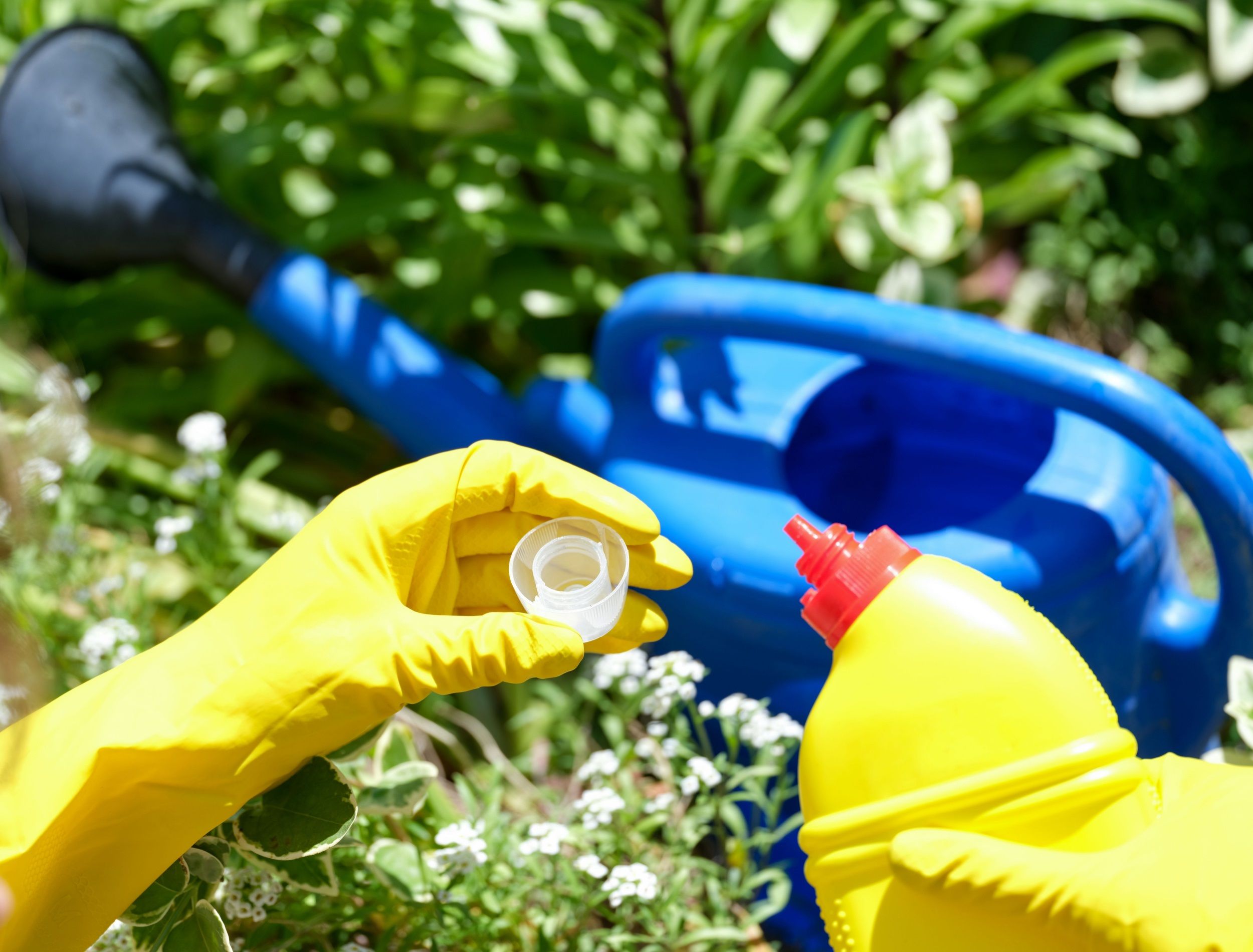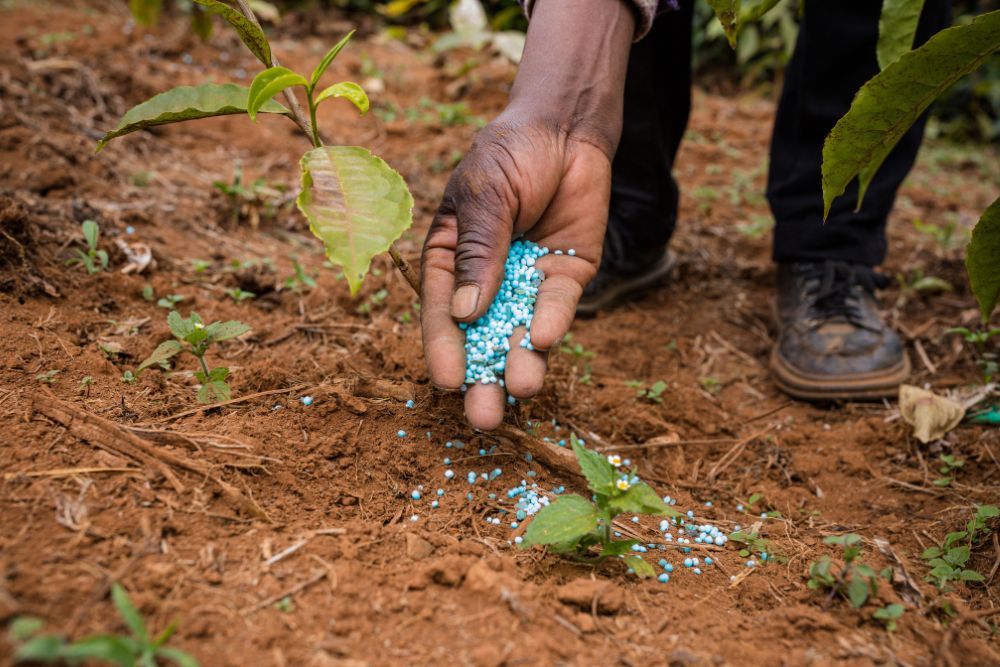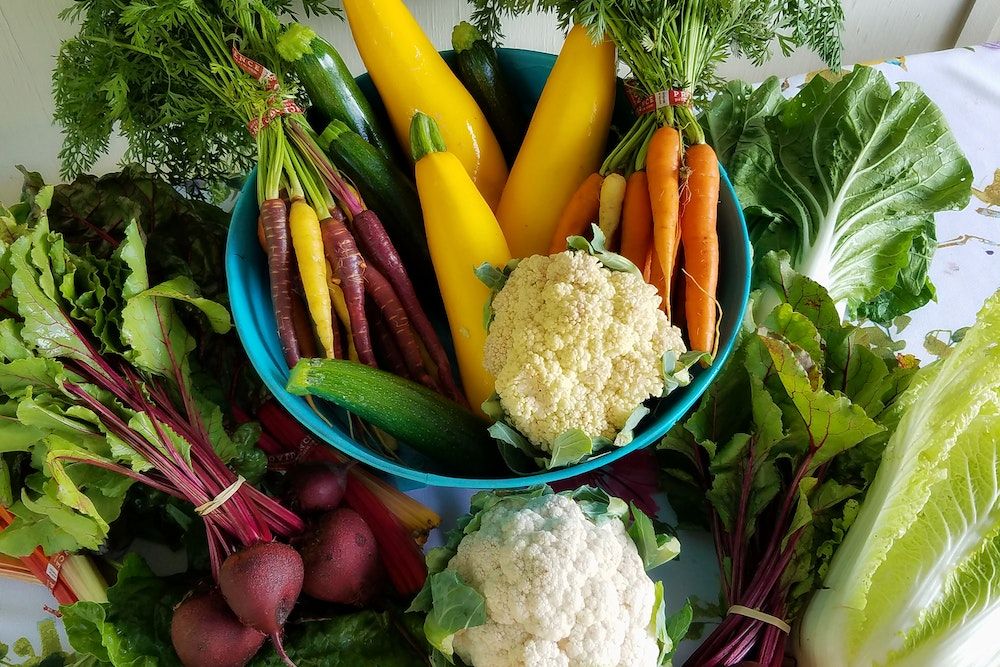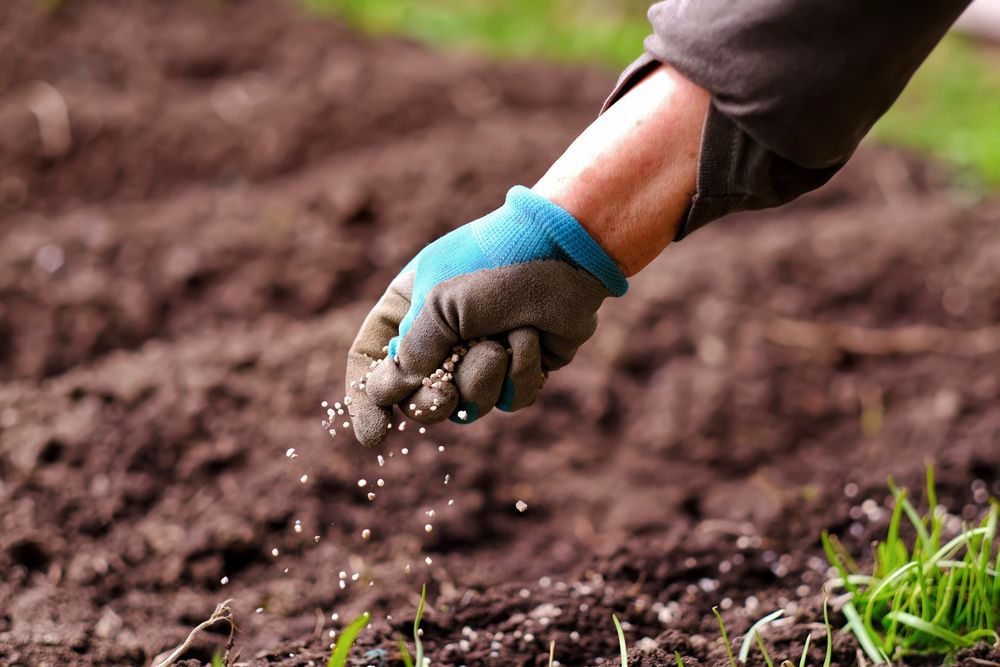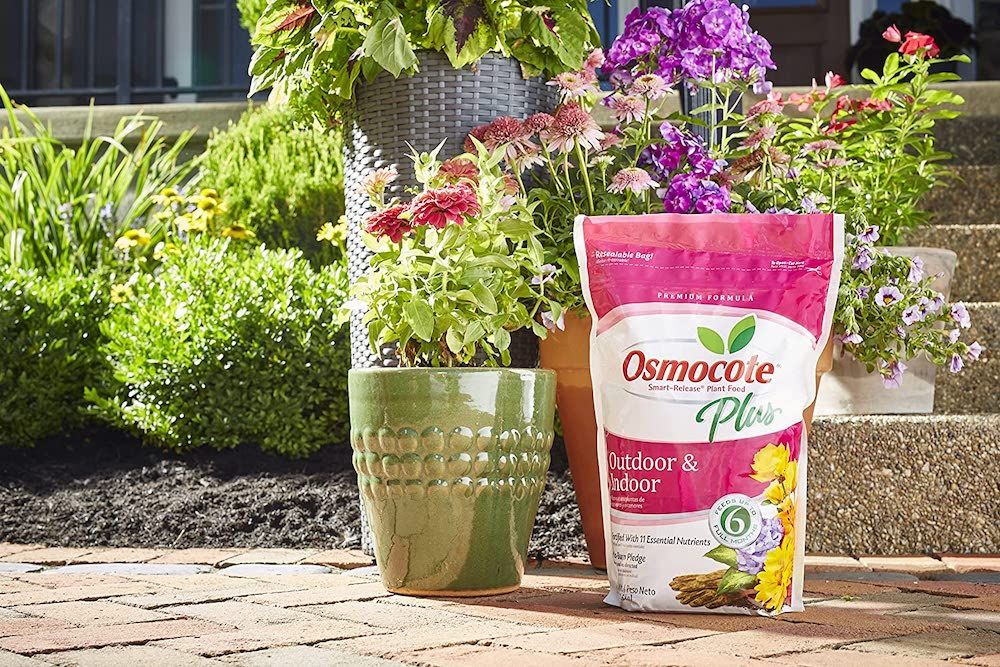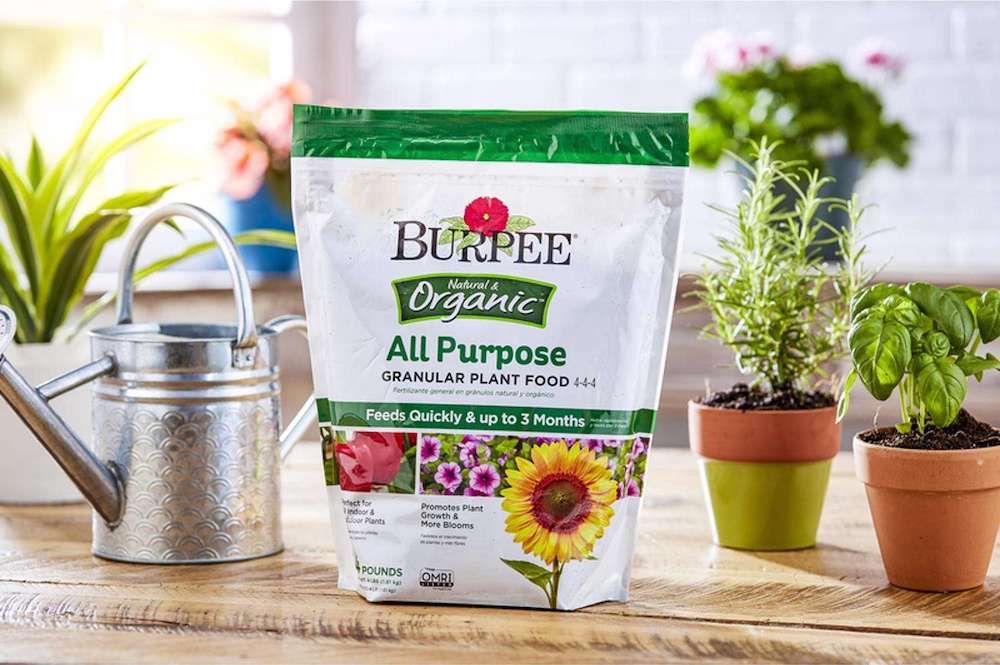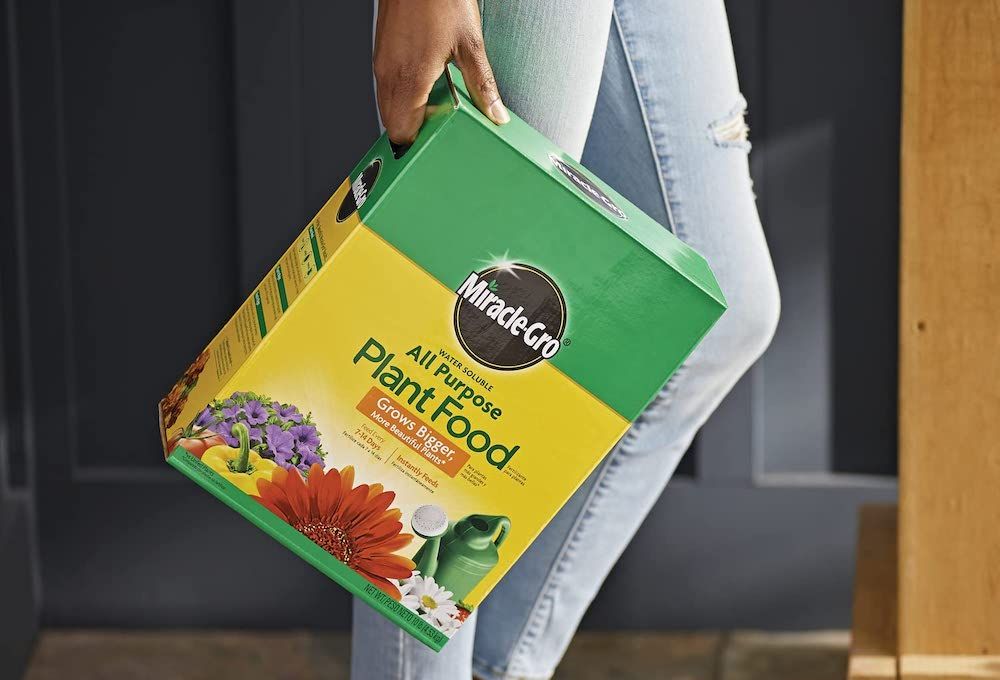Fertilizer plays a crucial role in producing fertile soil and healthy plant growth. Some fertilizers, like manure, compost, and minerals, come from organic and natural sources, whereas others, like bloodmeal, ammonium nitrate, and potassium sulfate, are a byproduct.
However, applying fertilizer is not simple because different plants have different requirements, growth periods, and sensitivities! Neglecting these factors during fertilizer application could have severe consequences, including yellowing leaves, wilt, and even plant death. Before using fertilizers, understanding their composition is important to determine the appropriate amount you need for your garden.
What is Fertilizer?
Image credits: Antony Trivet via Pexels
Fertilizer helps maintain soil fertility by providing essential major, minor, and micro-nutrients. Before applying fertilizers, test your soil every three to four years before the growing season.
This test will reveal any nutrient deficiencies or excesses in your soil and help you choose the appropriate fertilizer type and quantity to amend it. The table below outlines fertilizers' major, minor, and micro-nutrients and their respective roles in promoting plant growth.
|
Fertilizer Nutrient Group |
Nutrients |
Functions |
|
Major nutrients |
|
|
|
Minor nutrients |
|
|
|
Micro-nutrients |
|
|
What to Consider
Whether you're using organic or commercial fertilizers, applying them correctly is essential, as over, under, or misapplication can negatively impact both your soil and plants.
Over-fertilizing can:
-
- Increase the soil's salt content, which harms the soil's microbes,
- Cause plant growth to outpace root development, which leaves the plant with immature roots that are unable to supply all its foliage with nutrients and water,
- Cause nutrients to leach into waterways or evaporate, which encrusts the soil,
- Stress the plant, which makes them weak and unable to fend against insects and diseases.
Under-fertilizing can:
-
- Cause stunted growth in the plant
- Leaf discoloration and wilting
Remember, healthy plant growth and the production of fruits or flowers depend on meeting each plant group's specific nutritional requirements.
The Amount of Fertilizer Your Garden Needs
Since fertilizer is necessary to improve soil quality for healthy plant growth and development, here's how much your garden needs:
1. Vegetables
Image credits: Solare Flares via Pexels
Vegetables need fertilizer in the early stages of their development and once again during their flowering and fruiting stages.
Nitrogen is an important nutrient for vegetables. If you're only using nitrogen-based fertilizers, the recommended amount is 2 pounds per 1,000 square feet or ⅛ pounds per 100 feet. If you're applying mixed fertilizer that contains 20 percent nitrogen, the recommended amount is 1 pound per 1,000 square feet.
Fertilize seedlings with a water-soluble fertilizer, then once the plants have moved past the seedling stage, mix granular fertilizer for healthy growth.
When using granular fertilizer, read the instructions on the label to understand usage and frequency.
2. Fruit Trees
Image credits: Slatan via Canva
Soil testing before fertilizer application is crucial. If the soil pH is outside the range of 6.0 to 6.5, wood ash or lime can be used to increase it, while sulfuric fertilizer can decrease the pH. Fertilize mature fruit trees yearly; don't add fertilizer to the planting hole when planting a sapling. Instead, a 10-10-10 fertilizer should be applied in a circular pattern between 18 and 24 inches from the sapling's stem. How much fertilizer you need to use will depend on the tree and its nutrient requirements; however, in general, apply a 10-10-10 at one pound per inch of trunk diameter, that you measure 1 foot above the ground. That said, don't exceed 2½ pounds 10-10-10 per year.
3. Trees and Ornamental Shrubs
Image credits: By Slatan via Canva
Fertilizers with ratios of 12-4-8, 12-6-6, or 16-4-8 are suitable for most trees and shrubs. Nitrogen is a critical nutrient, with mature trees and shrubs requiring 2 to 4 pounds of nitrogen per 1,000 square feet (⅛ to ⅔ pounds per 100 square feet). Younger shrubs need more nitrogen to support foliage growth, but a complete fertilizer with phosphate and potassium can greatly benefit their development.
Types of Fertilizers
Image credits: VisualArtStudio via Shutterstock
There are two main fertilizers: organic and inorganic or synthetic. Here's how they differ from each other.
1. Commercial Fertilizer
Synthesized commercial fertilizers come in liquid, dry, and slow-release forms. These are made from mined materials that are processed to make a variety of nutrient combinations, like; a 5-10-10 or 16-16-16 ratio of nitrogen, phosphorus, and potassium. Micro-nutrients are normally detailed as well.
Dry and liquid fertilizers are fast-releasing, which makes them susceptible to leaching through rainfall. On the other hand, slow-release commercial fertilizers require a soil temperature of about 70 degrees Fahrenheit before they become active. As a result, slow-release fertilizers may not be suitable for soils near the coast.
|
Chemical fertilizer |
Nutrient percentages |
|
Aqua ammonia |
21% (N) |
|
Urea |
46% (N) |
|
Diammonium phosphate |
18% (N) 46% (P) 0% (K) |
|
Potassium magnesium sulfate |
22% (K2O), |
2. Organic Fertilizer
Organic fertilizers are those that come from decomposed plants and animals. Soil bacteria and fungi break down the nutrients in these materials, making them available for plant use, which results in the slow release of nutrients.
Unlike commercial fertilizers, organic fertilizers do not create a surface crust; instead, their microorganisms help to enhance soil structure, water retention, and drainage. However, it's important to note that microorganisms in organic fertilizers don't thrive well in colder temperatures.
|
Organic material |
N-P-K ratio per 100g |
|
Blood meal |
12.5-1.5-0.6 |
|
Burned eggshells |
0-0.5-0.3 |
|
Fish emulsion |
5-1-1 |
|
Feathers * |
15% N |
|
Wood ash* |
3 to 7% K |
|
Oyster and clam shells* |
Rich in calcium- 30% Ca |
*For amending the particular nutrient
Some of the best organic slow-release fertilizers include:
1. Osmocote Smart-Release Plant Food
Image credits: HomeDepot
Boasting a mix of 11 nutrients with an N-P-K ratio of 15-9-12, Osmocote smart-release plant food is a slow-releasing chemical fertilizer sold in granules. An 8-pound bag of fertilizer amounts to 8 liters of liquid fertilizer when diluted and can nourish indoor and outdoor plants for six months.
2. Burpee Natural Purpose Granular Organic Food
Image credits: AceHardware
Feed seedlings, bedding plants, vegetables and fruits in your garden, deciduous or evergreen trees and shrubs organic food by Burpee. The self-proclaimed fast-releasing organic fertilizer has an N-P-K ratio of 4-4-4 and comes in a 4-pound pack of granules lasting up to three months. Mix the granules into potting soil or dilute it to make a liquid fertilizer for all the plants around your garden.
3. Miracle-Gro Plant Food
Image credits: HomeDepot
Top acclaimed all-purpose plant food by Miracle-Gro is a chemical fertilizer for indoor house plants and outdoor flora. The water-soluble fertilizer is available in ½ pound to 10-pound packages with a recommended feeding schedule of every seven to 14 days to get the best results.
Worth the Odor!
While fertilizer is similar to a potent tonic with remarkable advantages, misusing it can harm your garden. That said, fertilizer alone cannot provide a universal plant solution.
You should apply fertilizers based on your plant's needs and soil conditions. Miracle-Gro Plant Food, a quick-release fertilizer, is often recommended. It allows experimentation with the ratio of nutrients to evaluate the fertilizer's effectiveness in a shorter duration.
Leave your experiences, thoughts, and questions in the comment section! And share with friends and family who might find this helpful.

